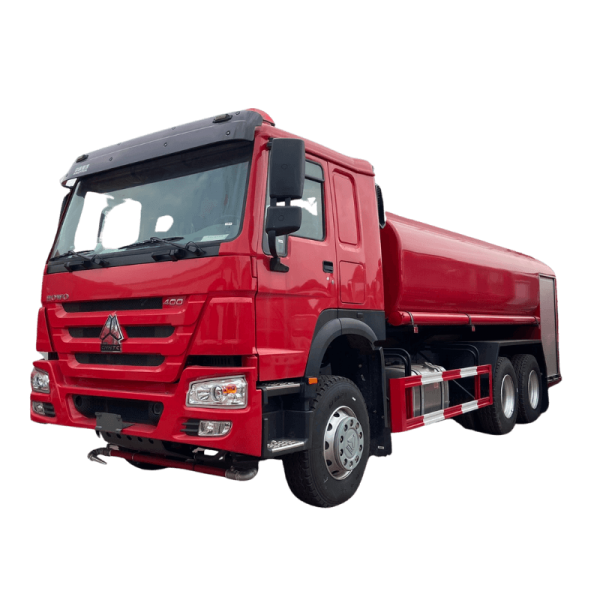Introduction
Garbage compactor trucks play a vital role in waste management systems, helping to efficiently collect and transport solid waste from residential, commercial, and industrial areas to disposal sites. These specialized vehicles are equipped with compactors that compress waste, allowing for increased storage capacity and reducing the number of trips required for disposal. As technology advances, manufacturers continue to innovate and improve garbage compactor truck features to enhance performance, durability, and environmental sustainability. In this article, we will provide a detailed comparison of the key features of garbage compactor trucks from leading manufacturers to help stakeholders make informed decisions when selecting the most suitable vehicle for their waste management needs.
1. Fuel tank truck cost and Engine
The chassis and engine form the foundation of a garbage compactor truck, providing the necessary structural support and power for efficient operation. Different manufacturers offer a variety of chassis options, including standard truck chassis or custom-built designs tailored to specific requirements. The choice of chassis can impact the overall performance, maneuverability, and durability of the vehicle.
When comparing garbage compactor trucks based on chassis and engine features, it is essential to consider factors such as engine power, fuel efficiency, emission standards compliance, and maintenance requirements. Some manufacturers offer trucks with advanced engine technologies, such as diesel-electric hybrid systems or alternative fuel options like compressed natural gas (CNG) or liquefied natural gas (LNG), which can reduce operating costs and environmental impact.
2. Compaction System
The compaction system is a critical component of a garbage compactor truck, responsible for compressing waste materials to maximize storage capacity and minimize the frequency of trips to disposal sites. There are several types of compaction systems available, including rear-loading, side-loading, and front-loading systems, each offering unique advantages in terms of efficiency, accessibility, and safety.
When evaluating garbage compactor trucks based on their compaction systems, factors to consider include compaction force, cycle time, loading capacity, and ease of operation. Some manufacturers incorporate advanced features such as automatic compaction controls, overload sensors, and remote monitoring capabilities to enhance performance and reliability.
3. Collection Mechanism
The collection mechanism of a garbage compactor truck refers to the method used to load waste into the compactor body. Common collection mechanisms include manual loading, automated lifting systems, and hydraulic tippers, each offering different levels of efficiency, speed, and labor requirements. The choice of collection mechanism can significantly impact the overall productivity and operational costs of the vehicle.

When comparing garbage compactor trucks based on their collection mechanisms, it is essential to consider factors such as loading capacity, versatility, safety features, and maintenance requirements. Some manufacturers offer customizable options to accommodate varying waste collection needs, such as specialized attachments for bulky items or hazardous materials.
4. Safety Features
Safety is a paramount consideration in the design and operation of garbage compactor trucks, given the hazardous nature of waste collection and disposal activities. Manufacturers prioritize the integration of safety features to protect operators, pedestrians, and other road users during vehicle operation. Common safety features include backup cameras, proximity sensors, audible alarms, and emergency stop mechanisms.
When assessing garbage compactor trucks based on their safety features, stakeholders should look for certifications and compliance with industry standards, such as ISO 9001 or ANSI regulations. Manufacturers that prioritize safety considerations demonstrate a commitment to protecting the well-being of their customers and the general public.
5. Maintenance and Serviceability
Proper maintenance and serviceability are essential for ensuring the long-term performance and reliability of garbage compactor trucks. Manufacturers design vehicles with serviceability in mind, incorporating features that facilitate routine maintenance tasks, repairs, and component replacements. Easy access to critical components, diagnostic tools, and comprehensive service manuals can streamline maintenance operations and minimize downtime.
When comparing garbage compactor trucks based on maintenance and serviceability features, stakeholders should consider factors such as warranty coverage, spare parts availability, technical support, and training programs. Manufacturers that offer robust maintenance support services can help operators optimize vehicle performance and extend the lifespan of their investment.
Conclusion
Garbage compactor trucks are indispensable tools in modern waste management systems, enabling efficient collection and transportation of solid waste to disposal sites. By comparing the key features of garbage compactor trucks from leading manufacturers, stakeholders can make informed decisions when selecting the most suitable vehicle for their waste management needs. Factors such as chassis and engine specifications, compaction systems, collection mechanisms, safety features, and maintenance considerations should be carefully evaluated to ensure optimal performance, durability, and environmental sustainability. As technology continues to advance, garbage compactor trucks are expected to evolve with enhanced features and capabilities to meet the evolving demands of the waste management industry.
